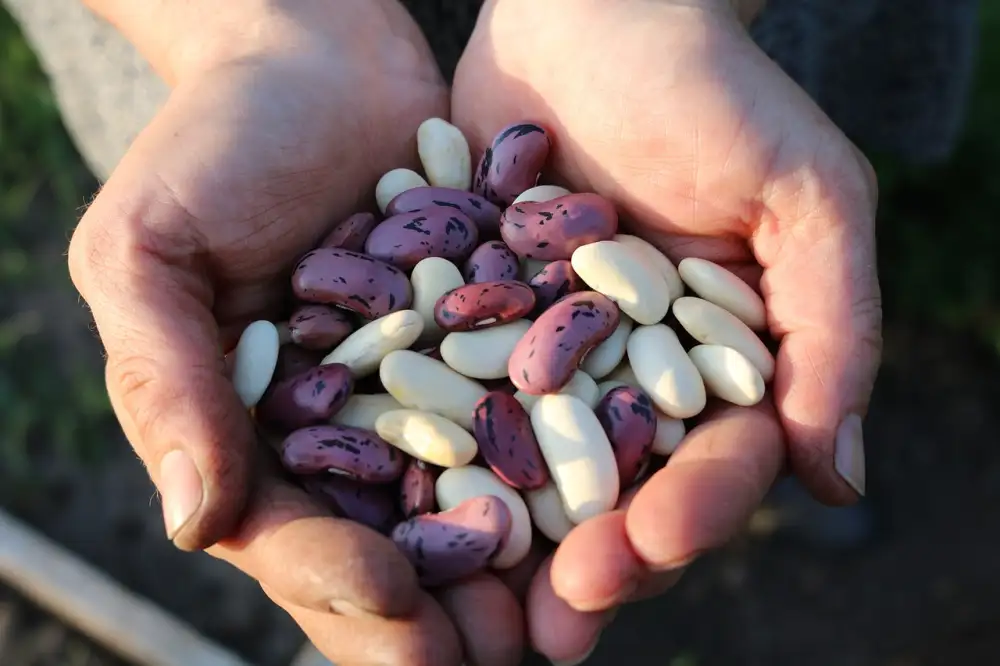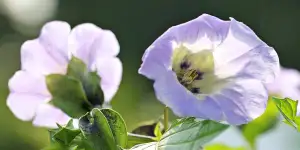Runner Beans: A Delightful Addition to Your Home Garden

- Growing runner beans: Tips for successful cultivation in your backyard
- Health benefits of runner beans: Discover the nutritional value and advantages for your well-being
- Delicious recipes with runner beans: Explore creative ways to incorporate this ingredient into your meals
- Runner beans in popular cuisines: Learn about the global culinary traditions that feature this beloved bean
- Storing and preserving runner beans: Techniques to ensure long-lasting freshness and flavor
- Fun facts about runner beans: Interesting tidbits about the history and cultural significance of this vegetable
Runner beans, also known as pole beans or climbing beans, are a versatile and nutritious vegetable that make a delightful addition to any home garden. These vibrant green pods are not only visually appealing but also packed with essential nutrients. With their tender texture and mild flavor, runner beans can be enjoyed in a variety of dishes, from soups and stews to stir-fries and salads. Whether you're a seasoned gardener or just starting out, growing runner beans is relatively easy and rewarding. So why not add this versatile vegetable to your garden and enjoy the fresh taste of homegrown goodness?
Growing runner beans: Tips for successful cultivation in your backyard
Growing runner beans in your backyard is a rewarding experience that allows you to enjoy fresh and nutritious produce right at home. Here are some tips for successful cultivation:
1. Choose the right location: Runner beans thrive in full sun, so select a spot in your garden that receives at least 6-8 hours of direct sunlight daily.
2. Prepare the soil: Ensure your soil is well-drained and rich in organic matter. Add compost or well-rotted manure to improve fertility and drainage.
3. Sow seeds or plant seedlings: Runner beans can be directly sown into the ground after the last frost, or you can start them indoors 4-6 weeks earlier. Plant them about 2 inches deep and space them 8-12 inches apart.
4. Provide support: As their name suggests, runner beans are climbers and require support to grow properly. Install trellises, stakes, or bean poles for them to climb on.
5. Water regularly: Keep the soil consistently moist but not waterlogged. Water deeply once or twice a week, especially during dry spells.
6. Mulch and weed control: Apply mulch around the base of the plants to retain moisture and suppress weeds. Regularly remove any weeds that compete with runner beans for nutrients.
7. Fertilize appropriately: Runner beans are heavy feeders, so provide them with a balanced fertilizer every few weeks during the growing season.
8. Watch out for pests and diseases: Keep an eye out for common pests like aphids, slugs, and snails. Use organic pest control methods if necessary.
By following these tips, you'll be on your way to successfully growing runner beans in your backyard and enjoying their delicious flavors all season long.
Health benefits of runner beans: Discover the nutritional value and advantages for your well-being
Runner beans are not only delicious, but they also offer numerous health benefits. Packed with essential nutrients, these vibrant green vegetables are a great addition to your diet. Runner beans are an excellent source of dietary fiber, which aids in digestion and helps maintain a healthy weight. They are also rich in vitamins A, C, and K, as well as minerals such as iron and potassium. These nutrients contribute to improved immune function, strong bones, and optimal heart health. Additionally, runner beans contain antioxidants that protect against cell damage and reduce the risk of chronic diseases like cancer. Incorporating runner beans into your meals can help boost your overall well-being and provide you with a nutritious and satisfying dining experience.
Delicious recipes with runner beans: Explore creative ways to incorporate this ingredient into your meals
Runner beans are not only versatile and nutritious, but they also lend themselves to a wide range of delicious recipes. Here are some creative ways to incorporate this ingredient into your meals:
1. Runner Bean Salad: Toss blanched runner beans with cherry tomatoes, feta cheese, and a lemon vinaigrette for a refreshing summer salad.
2. Runner Bean Stir-Fry: Sauté runner beans with garlic, ginger, and soy sauce for a quick and flavorful side dish.
3. Runner Bean Casserole: Layer cooked runner beans with sliced potatoes, onions, and grated cheese, then bake until golden and bubbly.
4. Runner Bean Curry: Simmer runner beans in a fragrant curry sauce made with coconut milk, turmeric, and spices for a satisfying vegetarian main course.
5. Runner Bean Pasta: Toss cooked runner beans with al dente pasta, olive oil, Parmesan cheese, and fresh herbs for a simple yet tasty meal.
These recipes showcase the versatility of runner beans and highlight their unique flavor profile. Experiment with these ideas or create your own culinary masterpieces using this delightful ingredient!
Runner beans in popular cuisines: Learn about the global culinary traditions that feature this beloved bean
Runner beans are not only a popular vegetable in home gardens, but they also hold a special place in various global cuisines. In Mexican cuisine, runner beans, known as "ayocote," are used in traditional dishes like frijoles de la olla and refried beans. In Mediterranean cuisine, they are often featured in stews and soups, adding a rich flavor and texture. In Indian cuisine, runner beans are used in curries and stir-fries, providing a vibrant color and taste. No matter the cuisine, runner beans bring their unique qualities to dishes around the world.
Storing and preserving runner beans: Techniques to ensure long-lasting freshness and flavor
Storing and preserving runner beans is essential to maintain their freshness and flavor. Here are some techniques to help you make the most of this delightful vegetable. Firstly, it's best to store runner beans in a perforated plastic bag in the refrigerator. This will keep them crisp and prevent moisture build-up. Alternatively, you can blanch and freeze them for future use. To do this, simply blanch the beans in boiling water for a few minutes, then transfer them to an ice bath to cool quickly. Once cooled, drain and pack them into freezer-safe containers or bags. Properly stored, frozen runner beans can last up to six months without losing their taste or nutritional value. So go ahead and stock up on these vibrant green gems!
Fun facts about runner beans: Interesting tidbits about the history and cultural significance of this vegetable
Fun Facts about Runner Beans: Did you know that runner beans have a rich history dating back to ancient civilizations? They were first cultivated by the indigenous people of Central and South America, who recognized their nutritional value. In fact, runner beans were considered a staple food in the Aztec and Inca civilizations. These beans were later introduced to Europe by Spanish explorers in the 16th century. Today, runner beans are not only cherished for their taste but also for their cultural significance. In many cultures, they symbolize fertility and abundance. So, next time you enjoy a dish with runner beans, remember the fascinating history behind this humble vegetable!
In conclusion, runner beans are a delightful addition to your home garden that can truly elevate your cooking experience. With their versatility, nutritional value, and delicious taste, they offer a range of benefits for both your health and culinary creativity. Whether you choose to grow them in your backyard or purchase them from the market, incorporating runner beans into your meals will add a burst of flavor and nutrients. So why not embrace the goodness of runner beans and take your home cooking to new heights?
Published: 19. 12. 2023
Category: Home



